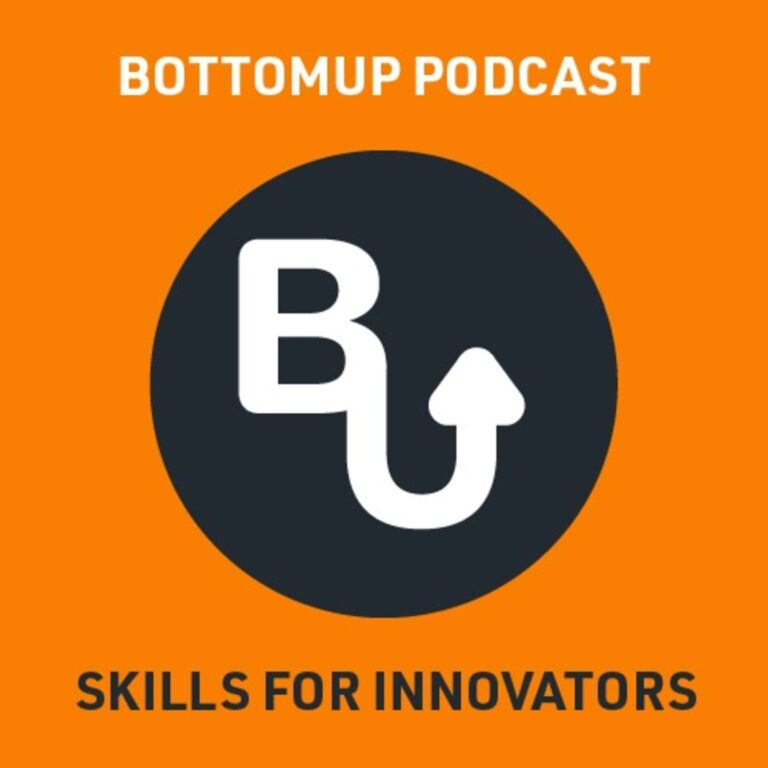In the world of product management, whether we’re creating a first-time product, solving any existing problem or making our product better, we need to start with a major question: what is the problem that our users deal with?
The interesting thing here is that the problem can change over time. And in terms of first-generation products, a lot of people assume the problem they’re solving. So do not underestimate the need to ask yourself this question, not only during product creation, but to continuously remind yourself, test and learn what problem you’re really solving.
Because too often, I see people guessing. And if you’re guessing the problem you’re solving, well, if you think about it, everything else that comes downstream of the problem – the solution, the product features, the service, everything will be built on a guess, and chances are, that’s not going to be a great product.
So let’s visit this question: What really is the problem that our users face and how do we frame that? What’s the checklist? Well, the good news is that Eric Reese and the lean startup team created a really powerful, yet simple tool called the value proposition canvas.
I’ve used it a lot of different times, so I speak from experience how useful it is. Essentially, the value proposition canvas weighs up two things.
- What is our customer?
- And what is our proposition?
Said differently, what we do is we get into some real details that help us frame the problem solution.
Now, if we think about the world of the customer, they experience pains when they’re trying to get things done in life. And they’re also looking for some gains as well. So these pains and gains are all part of the jobs to be done. If you can frame the jobs that your customer is trying to get done, the pains that they experienced and the gains they’re looking for, then you’ve done a great job of framing the world of a customer.
That means you have the problem that the customer faces in the solution that you propose, and what we call this is a value proposition canvas.
If you’re interested in learning more about the value proposition canvas, you should definitely check out our Lean Masterclass. Or if you want to learn more about product management and how to discover the user problem, join us at the BottomUp Skills Podcast for more bite-sized product skills and at BottomUp Skills for free courses on Design Thinking, Agile, Lean, and much more. Free skill courses for product people and innovators.
TRANSCRIPT
Hello, and welcome to the bottom-up skills podcast. I’m Mike Parsons the CEO of Qualitance. Today we are talking about what is the user problem that our users have some more out there in the world of product management. Whether we’re creating a first-time product or make any existing problem, our product better.
We have to ask ourselves, what is the problem? Our users face now. The interesting thing here is this can change over time. And in terms of first-generation products, I see a lot of people guessing what problem they’re solving.
So do not underestimate the need to ask this question, not only in product creation, but to continuously remind yourself, test and learn what problem you’re really solving. Because too often, I see people guessing.
And if you’re guessing the problem you’re solving, everything else that comes downstream of the problem. The solution, the product features, the service, everything will be built on and chances are, that’s not going to be a great product.
User Problem and the Value Proposition
So let’s visit this question. What really is the problem that our users face and how do we frame that? Like what’s the checklist?
Well, the good news is that Eric Reese and the lean startup team created a really powerful, yet simple tool called the value proposition canvas. And I can’t tell you how useful this is.
I’ve used it a lot of different times. And what it essentially does is it weighs up two things. What is our customer? And what is our proposition so differently? What we do is we get into some real details that help us frame problem solution.
The Customer
Now, if we think about the world of the customer, they experienced pains when they’re trying to get things done in life. And they’re also looking for some gains as well.
So these pains and gains are all part of the jobs to be done. If you can frame the jobs that your customer is trying to get done, the pains that they experienced and the gains they’re looking for, then you’ve done a great job of framing the world of a customer.
Now what’s really interesting here is this idea of a value proposition canvas, it’s not a fixed object. In fact, it should be changing all the time, it should be very iterative.
Lean Hypothesis and Value Proposition Canvas
So it’s a bit like your lean hypothesis that we mentioned in an earlier episode of this series, where we talk about the fact that as you test and learn, whether it’s your hypothesis, your value proposition canvas, or your business canvas. These things should be updating all of the time.
So we’re talking a lot about pains and gains or user problems in the jobs to be done for our customer.
Example: Airbnb
Let’s just take an example. So Airbnb, what are the pains people experience?
Well, if, if you think about it, people are not sure if the, if the. Property that they’re going to be a guessing, they’re not sure of the quality of it.
Will they be sharing a space for strangers? Stranger danger is a huge problem for Airbnb. Then there’s safety concerns. Those are the pains that you experience now.
What are the gains that your customer is looking for? If they’re trying to rent an Airbnb. Well, it’s probably a bit cheaper than a hotel.
Meet some interesting people, get local experience. Sometimes a bit more flexible than a hotel, something that fits them better. So they’ve got lots of options.
Customer Pains and Gains
Those are some of the gains that they’re looking for. What you could do is frame those against the main jobs to be done, which is hassle-free and safe booking of accommodation.
When you’re on a holiday, or cheap accommodation, or if you are a host making additional money by renting out one of your rooms. So this is what you actually put on your canvas.
A snapshot of the challenges and the mission that your customers are after. So let’s remind ourselves of what jobs need to be done. And those tend to be the bigger themes of the user. Then as the customer goes to achieve those jobs they bump into all these blockers and barriers or user problems.
Sometimes they might be very practical or emotional, like stranger danger, for example. So then the last thing is the gains, and these are sort of the benefits or the reasons why people are doing this job.
And in the case of Airbnb, it’s like having a great, authentic local experience, meet some interesting people. But this is really good because when you play in this world, you’re going to find that this will change and grow.
Customer Value Drivers
Things will emerge as the big value drivers for your customer. So it could be primarily, there is one job to be done, and there’s just only a couple of really key pains and gains. And if you capture all of those and by capture, I mean, you do interviews.
You do surveys, you research into emerging needs of users, consumers, market trends, industry trends. We’re not guessing here this really has to be validated by all sorts of forms of research.
Then you’ve got like the perfect snapshot of the user problems. Now this that I’ve described to you is the customer side of the proposition.
What we’re going to do in the next shows. We’ll talk about the other side. Which is the proposition that comes from you as a product manager, as a product creator, a builder, a designer, we’re going to get into how you answer that goal.
Mapping the User Problem
But what’s really important here is that you accurately map these user problems, user pains, gains and jobs to be done. We don’t want to guess these, go out test and learn what are the problems that users really face.
For example, if you’re going to do a survey minimum, a hundred people, if you’re going to do user interviews, a minimum of 10 people.
You’ll need to have some certainty. Because your sample size has been significant enough. Patterns will become very clear on what they need.
From that, hen you’ll have this map of what customers need. And importantly, because you’ve put the hard work into that, the next step is to map the other side, the proposition.
The Problem Solution Fit
So if you put equal work into that, then you’ll get what we call the problem solution fit.
That means you learn’t the problem that the customer faces or the user problem in the solution that you propose. What we call this is a value proposition canvas.
Now, if you are interested in learning about the value proposition canvas check out our lean master class it’s totally free.
You can find that at bottomup.io. Well, I hope you’ve enjoyed this episode of the bottom up skills podcast. That’s a wrap.



